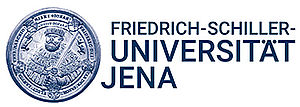Awards and Studies
Joya Shoes are certified by AGR e. V., Germany
Thanks to the unique sole technology, Joya uses the positive effect provided by the soft elastic material underneath in order to support the musculoskeletal system. The German Association "Aktion Gesunder Rücken" (abbreviated AGR) awarded Joya its AGR Quality Label and recommends Joya as being particularly good for the back.
The AGR Quality Label provides consumers with the optimal orientation when purchasing ergonomic products and helps them to avoid making unwanted purchases.
The difficulty for consumers is to recognise which product supports the spine and the musculoskeletal system optimally, while, at the same time, relieving and not causing stress and strain. In the case of the majority of our products, you do not directly recognise their back-friendly design and preventive effect against back pain. The AGR Quality Label is the perfect help in this case as it is independent of the industry and retail. The high level of acceptance achieved by the AGR Quality Label among experts is thanks to the strict test criteria of an independent commission of medical experts which the AGR came up with in conjunction with the two largest German back training associations.
Tested and recommended by the forum: Gesunder Rücken – besser leben e. V. (German Association forum Healthy Back – for a better life) and the Bundesverband deutscher Rückenschulen (BdR) e. V. (German Association of Back Training Facilities). Further information available at: AGR e. V., Stader Strasse 6, 27432 Bremervörde, Web. www.agr-ev.de

Study by the University of Jena, Germany
To investigate the influence of Joya shoes on the muscles in our legs and backs, Jena University Clinic completed a study. Using their own biomechanical laboratory, around 50 subjects tested both standing and walking in Joya shoes, while an electromyograph was used to record the activities of their muscles. Movement processes were examined while walking barefoot, with Joya, and with conventional street shoes.
The results provided by Friedrich Schiller University support Joya:
- Joya supports healthy standing by promoting micro and macro movements, which are caused during standing via increased activation of the muscles, thereby preventing heavy, tired legs.
- During walking, impacts that affect the body during the stepping phase are significantly absorbed more than conventional shoes or walking barefoot due to the shock-absorbing sole.
- The Joya models featuring the Emotion sole provide relief to muscles, and are therefore also suitable for extended periods of stress.
- Joya models featuring the Motion sole feature a clearly activating characteristic, and may be considered fitness equipment for this reason.
- Plus, relief is provided to spinal discs and joints, because activation of the muscles in the feet, legs, and the back strengthen the active shock absorbing system.

Reports:
Final Report Summary (English)
"Influence of different shoe configurations on the activity pattern of selected leg and torso muscles" (PDF document)
Final Report Full (German)
"Einfluss von verschiedenen Schuhkonfigurationen auf die Aktivitätsmuster von ausgewählten Bein- und Rumpfmuskeln" (PDF document)
Appendix to Final report (German)
"Einfluss von verschiedenen Schuhkonfigurationen auf die Aktivitätsmuster von ausgewählten Bein- und Rumpfmuskeln" (PDF document)
Study completed by MTF Elke Mey, cand. med. Lisa Kulschewski, Prof. Dr. Christoph Anders. (c) Friedrich-Schiller-Universität, Jena, Germany, 2017-2018.
Study by the Swiss Federal Institute of Technology’s (ETH)
To investigate the influence of Joya shoes on people’s gait when walking, and to study the forces acting on their feet, the Biomechanics Institute at the Swiss Federal Institute of Technology (ETH Zurich) carried out a study using a gait analysis.
This study involved twelve test subjects and looked into the sequence of movements when walking barefoot, in Joyas, in KyBoots and in MBTs. The analysis used high-speed video recordings of foot strike, kinetic measurements of the ground reaction force and kinematic measurements of body position and movement.

The Swiss Federal Institute of Technology’s results speak in favour of Joya
- In the first heel-strike phase, the cushioning effect of the Joya sole reduces the forces affecting the body considerably (by a factor of 2 to 5) compared with walking/running barefoot.
- Joya produces a far greater range of motion as the sole’s soft, supple structure makes it very yielding. When we walk barefoot on an uneven, natural surface (on sand, uphill, downhill, etc.), the range of motion is also naturally larger. The soft, supple structure of the sole makes it likely that more effort will be required, more energy burned and the muscles will get more exercise.
- In Joya shoes, motion graphs generally follow a smoother track (less jerky) than in conventional shoes.
- No difference was found between the Karl Müller shoes and the round-sole shoes when it came to upper body posture.
Read more here:
Summary ETH study in English: "Gait parameters of various shoes" (PDF, 4MB)
Full length ETH Studie in German: "Gangparameter von verschiedenen Schuhe" (PDF, 7MB)
Study carried out by Dr Dr Silvio Lorenzetti in cooperation with Dr Renate List, Patrick Hiltpold, Aline Mühl. (c) ETH Zürich 2011.

